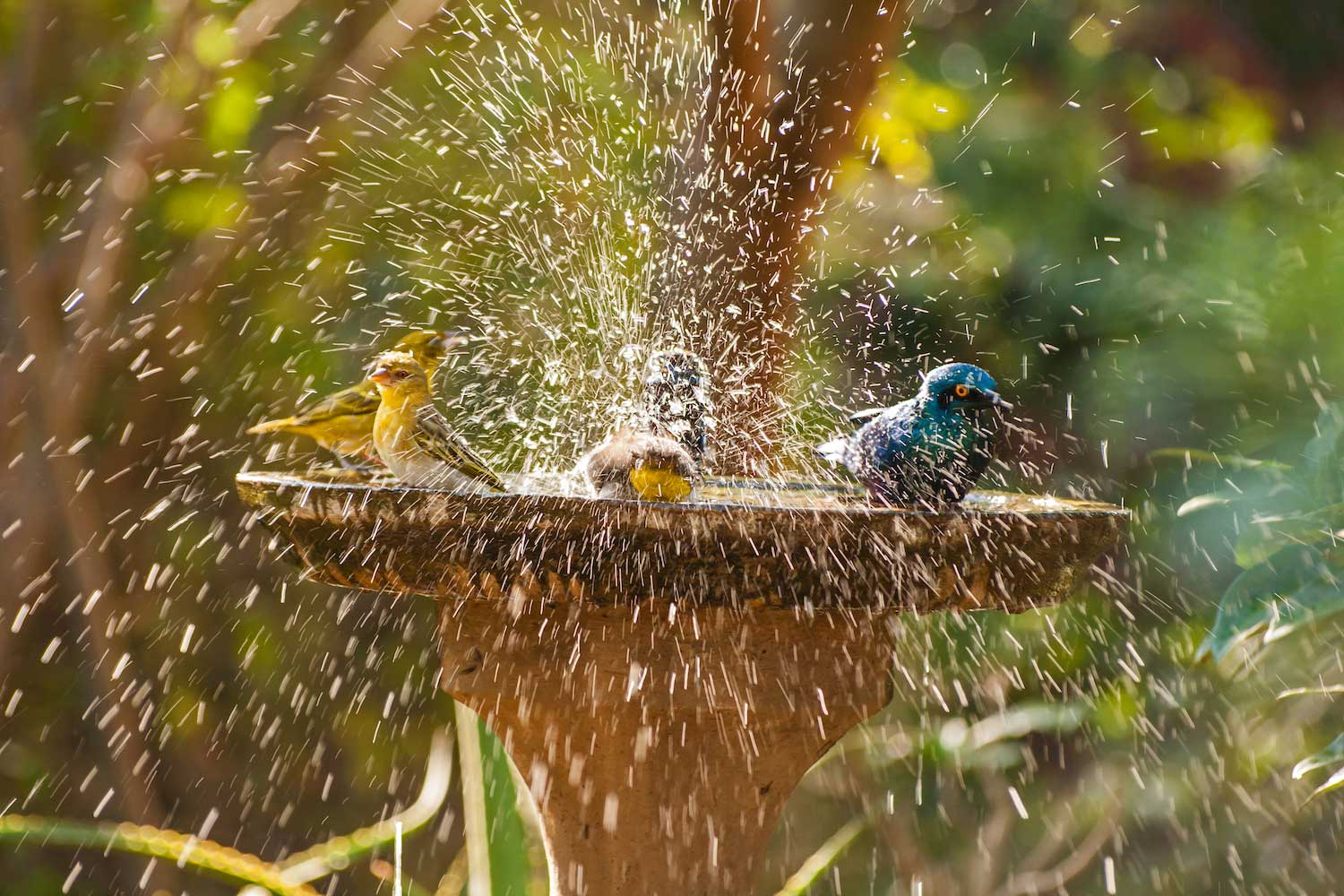How to take care of a birdbath to keep birds visiting all year

Splish, splash, the birds like taking a bath, but it's not enough to just put out a birdbath and keep it full. You've got to put it in a good spot and maintain it to make it a safe and healthy place for birds to visit.
Just like in the world of real estate, location is everything when it comes to where you place your birdbath. Look for a spot near shrubs or trees. Birds are vulnerable at a birdbath, out in the open where predators can find them. Placing a birdbath near shrubbery or trees gives them a place to escape to if a predator tries to strike, according to the National Wildlife Federation. If possible, avoid placing it directly under a tree so the water doesn't get dirtied by falling leaves and other debris.
And when selecting your birdbath, size is important too. Many small birds use birdbaths, but they need a shallow body of water. Look for a birdbath with a bowl no more than 3 inches deep, the wildlife federation advises. It should also have a textured interior surface so birds don't slip. If your birdbath has a smooth interior, you can add rocks or gravel to the bottom to provide better grip.
Your birdbath doesn't have to be fancy. You can use plant saucers or shallow pots placed on level ground as a birdbath. Even a shallow lid or a tree stump with a hole can double as a birdbath as long as it holds water and can be cleaned out.
Once you've found the perfect spot and the birds are regularly visiting, cleaning your birdbath is a must. However, you shouldn't use soaps or other cleansers when you wash it because they can strip the oils from birds' feathers, the National Audubon Society reports. Instead, make a solution of 9 parts water to 1 part vinegar and use it to scrub and rinse the surface of your birdbath. A cleaning brush or scouring brush will be needed to give it a thorough cleaning.
How often it should be cleaned depends on how busy it is and the weather. Birdbaths should be cleaned regularly in the summer by scrubbing away any droppings and algae that have accumulated, the National Wildlife Federation advises.
Between cleanings make sure to keep the water fresh as well. The National Audubon Society recommends refilling the water every other day. In warm weather, daily refills may be needed.
One reason you don't want the water to sit in your birdbath for more than a few days is because it can allow mosquitoes to breed. These pesky insects complete their entire life cycle in just eight to 10 days, the U.S. Centers for Disease Control and Prevention reports. Adult female mosquitoes lay their eggs in water and the larvae are ready to hatch in as little as a few days after being laid. About a week later, those eggs are biting adults.
Birdbath maintenance isn't over once summer and fall give way to winter. Birds need a fresh source of water all year, and water can be hard to come by in colder temperatures. Consider adding an electric heater to your birdbath to ensure the water does not freeze over, the National Wildlife Federation suggests. Alternatively, you can rotate your water supply each morning, bringing the frozen birdbath inside to thaw and replacing it with a fresh supply of water.
